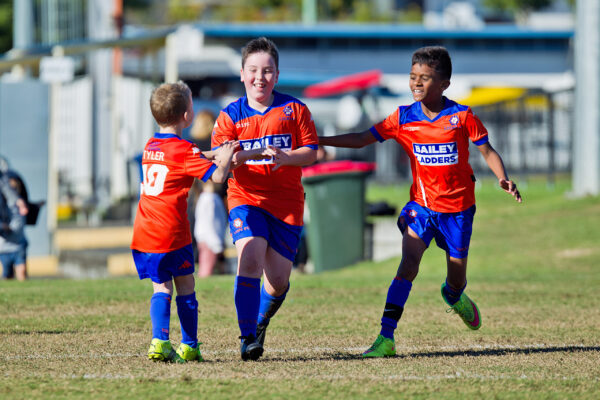
In recent times, Football Australia released their ‘Legacy 23 report’ on the Women’s World Cup which was held in Australia and New Zealand last July.
Sarah Walsh – Head of Women’s Football, World Cup Legacy and Inclusion at Football Australia – reflected on the impact of the Matildas after the release of the Legacy report. The Matildas have been at the forefront of transformative societal change, challenging perceptions and gender stereotypes while advocating for sustained evolution within the Australian and international sporting landscape.
“The Legacy ‘23 post-tournament report delves into the success achieved in leveraging the tournament, however, emphasises the need for increased funding to ensure that the legacy of the FIFA Women’s World Cup Australia and New Zealand 2023 isn’t merely a momentary triumph, but evolves into foundations for a thriving, equitable, and dynamic future for football,” Walsh stated.
The numbers revealed in the report were quite staggering. The document stated that the World Cup had generated a $1.32 billion impact on the economy – with over 86,000 visitors to Australia contributing strongly to that figure.
1,288,175 tickets were sold to Australian based matches, with a global television viewership of almost two billion people.
The event itself played a hugely significant role in promoting physical exercise and well-being across the nation with an estimated $324 million reduction in healthcare costs due to this increased activity in the community.
A key part of the ‘Legacy 23’ plan from the FA was to garner increased government investment in facilities – due to the expected boom of popularity in the sport after hosting a World Cup on home shores.
Football Australia unlocked more than $398 million in federal and state government funding for ‘Legacy 23’ related projects. $129 million of the total funds also positively benefitted other sports – due to facility upgrades to stadiums such as Perth Rectangular Stadium, Brisbane Stadium, Melbourne Rectangular Stadium and the La Trobe Sports Precinct in Melbourne.
Due to the Matildas’ success, and FA’s advocacy, the Australian government contributed $200 million to the ‘Play Our Way’ grant program. This is Australia’s biggest comprehensive investment in women’s sports, with funding to address participation barriers through safe, inclusive and sustainable facilities and programs.
While the allocation of the investment between sports for this grant program has not been made public, football must be at the forefront for a large portion of this funding with a home Women’s Asian Cup on the horizon.
According to FA’s ‘Legacy 23’ report, under 20% of the $398 million worth of government funding was invested into community facilities.
“There remains a significant deficiency in facility investment across pivotal states that demands urgent attention,” FA’s report read.
“As participation demands increase, the strain on existing facilities within the 2,400+ clubs nationwide, already at saturation levels, requires immediate attention from all levels of government—federal, state, and local.
“Addressing this gap is essential to meet the expected surge in participation, improve the experience and retention rate for women and girls on our journey to the national 50:50 target, and continue fostering the wide-ranging benefits that football provides to its community of over 2 million people.
“It will therefore be crucial that grassroots football club facility upgrades materially benefit from the Play Our Way grant program.”
The AFC Women’s Football Committee recently recommended Australia as the host country for the 2026 Women’s Asian Cup – essentially earmarking another monumental football tournament to be held in our backyard.
According to Australian Financial Review, Football Australia is expecting up to half a million attendees for the event, with visitor/organisation expenditure of between $115 and $140 million, making it the biggest female edition of all time.
With the tournament just two years away, it is essential that further grassroots facility investment is allocated by government parties as the demand and popularity of the sport will continue to grow at a significant rate.
FA claims the Asian Cup represented “a crucial platform to advance the goals outlined in the ‘Legacy 23’, particularly in addressing the shortfall in football facility investment.”
“Australia is ready, one of the most multicultural societies in the world, with over 300 different ancestries and almost 20% of our nation’s population having ties back to countries that comprise the Asian Football Confederation, meaning every team that visits our shores will have a ‘home away from home’ feeling,” the report said.
“This esteemed Asian football tournament provides an ideal platform for all tiers of government to employ football as a tool for effectively implementing sports diplomacy and tourism strategies within Asia.”
The governing body believes there is an overall $2.9 billion facility gap to bring grassroots facilities in line to an acceptable level.
They won’t get anywhere near that level of investment from government authorities immediately, but considerably more must be invested before Asia’s biggest female sporting event comes to our shores.


















